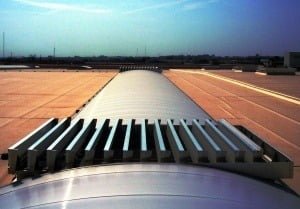
Smoke evacuation systems maintenance
Actualizado a fecha: 2 December, 2018
The priority of a Smoke Evacuation and Temperature Control System in case fire is always to save lives, leaving the evacuation routes free of smoke. That is why it is essential that the system was always in perfect condition of maintenance. They also allow to firefighters to quickly access into the focus of the fire, helping to stop the fire in its initial stages.
The standard UNE 23.584: 2008 “Requirements for the installation on site, start-up and periodic maintenance of the SCTEH” marks in point 9.1: “The system must undergo maintenance, including a functional test, at least once every 12 months. If replacement of components or elements is required, the system shall remain in accordance with this standard. ”
In case of public spaces, such as atriums, shopping malls and car parks, the regulatory framework is the CTE. It refers to the aforementioned UNE 23.584 standard for the correct maintenance of the system.
The problem is that in current industrial regulations, the “Royal Decree 1942/1993 of November 5, approving the Regulations on Fire Protection Facilities,” known as RIPCI, only gives us one important recommendation for the correct maintenance of these systems, without setting deadlines nor obligatoriness. This means that in many industries the SCTEH has been installed without any kind of preventive maintenance, despite being such a primordial system to save lives, such as a fire extinguisher or a sprinkler (of which maintenance and inspection is regulated) . This legislation has been updated for several years and it is pending of approval by the European Commission for its subsequent publication in the BOE.
In this 23rd revision of the RIPCI, a maximum period of 6 months is established to:
– Check the operation of the system components by activating them manually.
– Clean the components and system elements.
And a maximum term of one year to:
– Check the operation of the system in its activation and rest positions, including its response to the manual and automatic activation signals and checking that the response time is within the design parameters.
– If the system has smoke control barriers, check that the head, edge and gasket spacings (according to UNE-EN 12101-1) do not exceed the values indicated by the manufacturer.
– Check the correct availability of the main and auxiliary power supply. Lubrication of the components and elements of the system.
– Alarm verification, signals and interaction with the fire detection system.
We hope that this updating of the RIPCI will not be delayed once again, so we can have as soon as possible a proper regulation that force the correct smoke evacuation systems maintenance in Industry not to regret more deaths by smoke inhalation due to a disable or not working Smoke Evacuation System.